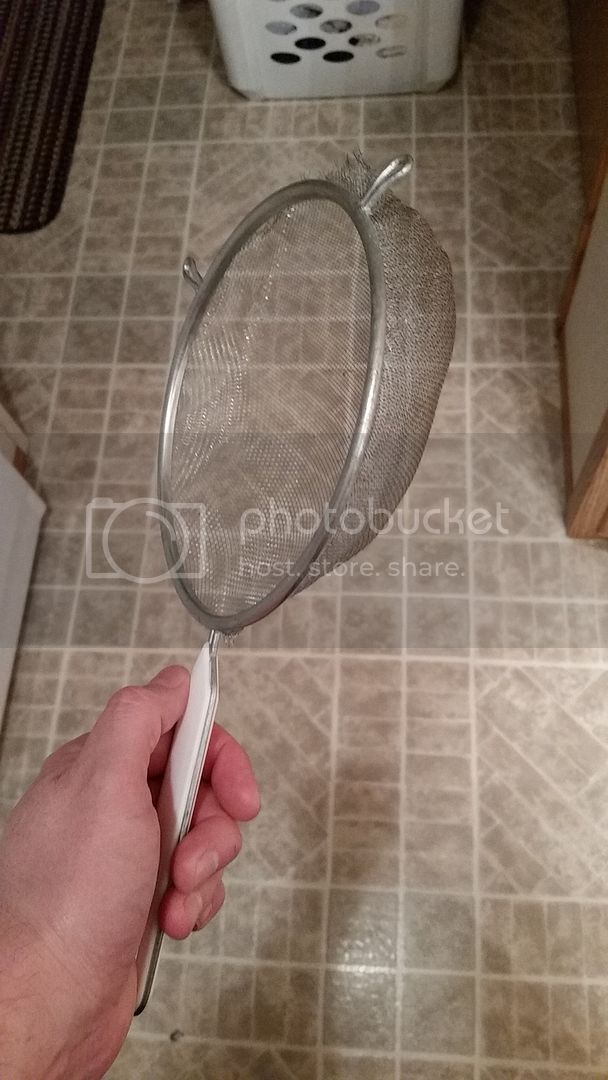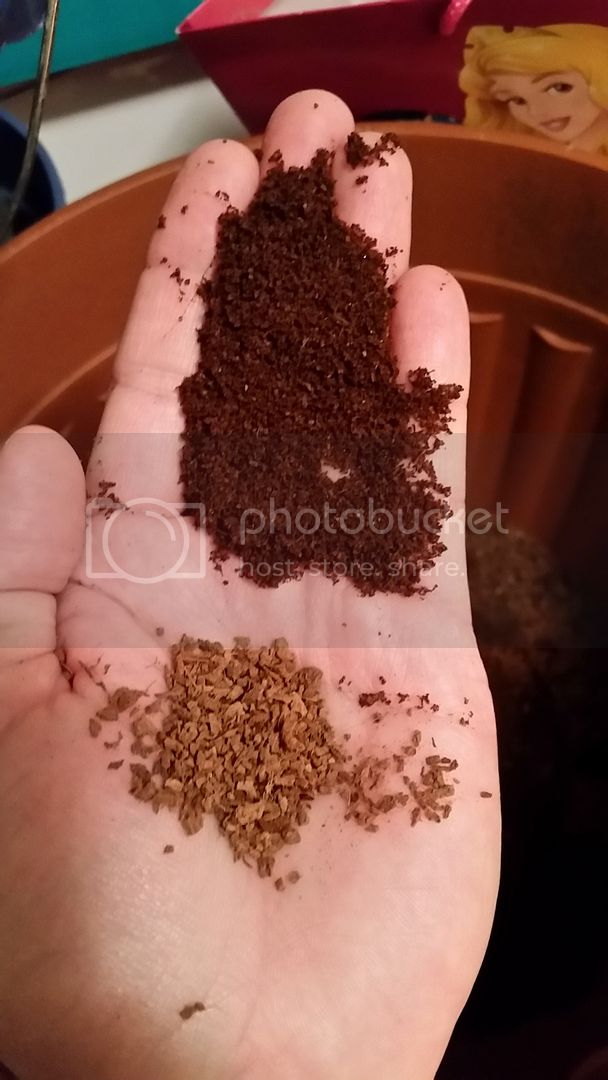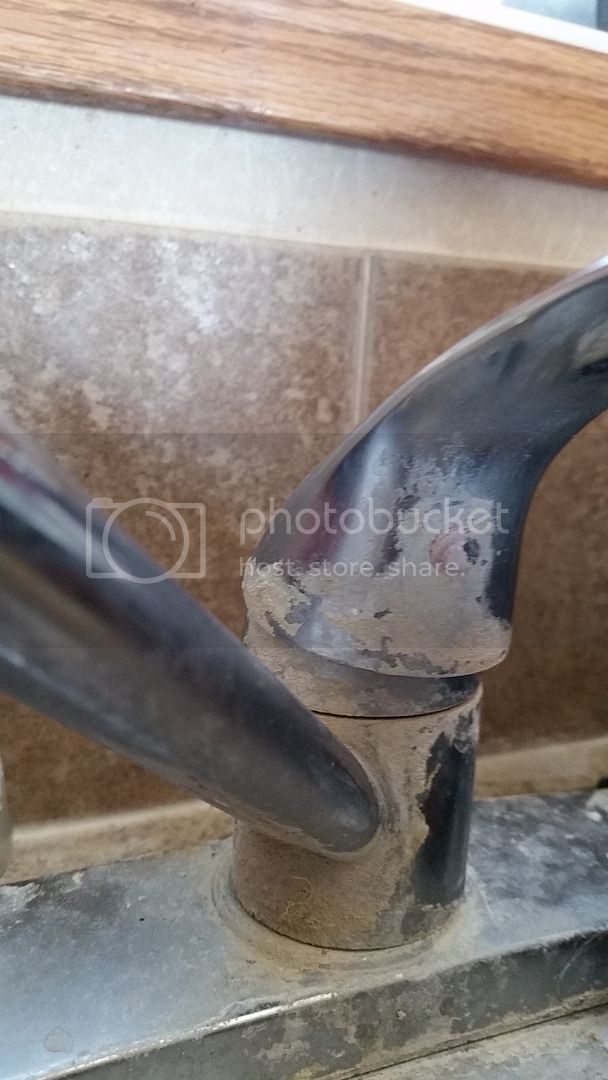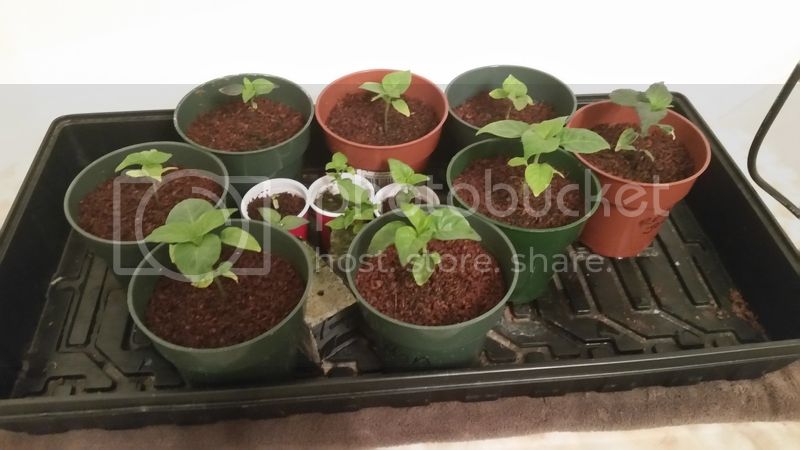Hello everyone!
I've always been fond of experimenting with all kind of different stuff, this led me to give growing in coco coir a go.
I'll bundle all the methods I use and that work for me so far in this topic, and I hope I can help some curious people with it.
The coco itself:
I myself grow in coco coir produced by Plagron. You should try to find high quality coco coir soil that has been washed in the factory, since unrefined coco coir may hold a lot of salt, and as well all know, salt is not exactly a friend of peppers. You could use compressed blocks of coco coir and expand them in a large container as shown below:
These types of blocks of coconut coir may still hold quite a bit of salt in them, so I would advice that after expanding them and putting them inside your pots, you rinse it very thoroughly with reverse osmosis or distilled water until you have a nicely clear runoff coming out of the bottom of your pots. This will get most of the salt out.
When growing peppers, which are quite prone to overwatering, I would mix at least one third in volume of perlite in your coco mix, or you can buy coco coir with perlite already added!
The addition of perlite gives a lot fluffier growing medium that can hold a lot of oxygen despite being constantly wet. Making it very hard to overwater your plants.
I've also heard and sort of experienced that you do not need extremely large containers when growing in coconut coir, your seedlings will become relatively large in relatively small pots. I'll have more knowledge about this in a later update since i'm still in the middle of my first grow. I
I would also recommend you to add a small layer of expanded clay balls or hydroton on the bottom of your growing containers to encourage better draining and holding some air in the bottom of your pots, just as an insurance policy against overwatering.
The nutrient solution:
You can find a couple of different coconut coir specific nutrients, which would be a good starting point. I myself run with General Hydroponics FloraNova series, since it's quite easy in use and very concentrated.
You will need some sort of a pH testing kit for growing in coconut coir. You can get these relatively cheap online, maybe even in your hydro store. Optionally you can get an EC or PPM meter too, to measure how concentrated your nutrient solution is, but if you use your nutrients sparingly (below full strength as described on the bottle, I'm sure you'll do just fine without one).
Firstly though, you'll need either reverse osmosis water or plain tap water to start making your nutrient solution. Use a PH-down product designed for hydroponics to lower your pH to between 5.5 and 6.5, more specifically I use 5.8 to 6. After lowering the PH of your nutrient solution, you can add your hydroponic nutrients in a conservative manner, i.e. : always use slightly less than directed on the bottle.
Even though I go by the nickname Fertilizer on this forum, I've had nutrient burn occur in some of my plants, which makes me a bit nervous to use full strength solutions, I advice you employ the same caution.
Mix everything up well and let the nutrient solution come up to at least room temperature, you dont want to shock your plant's roots by adding very cold or very warm nutrients.
Now, if you use reverse osmosis water, you should add a small dash of CalMag to your water, as coconut coir tends to hold very firmly to calcium and that may or may not result in a calcium deficiency in your plants, I wouldnt take any chances if I were you. Now if you have very hard water, like I do, you most likely will not have to add any calcium supplement to your nutrients, since hard water is full of calcium already. You could use half a teaspoon or less of Epsom Salts every other time you make a nutrient solution, this is the current strategy i'm using.
Some resources on your nutrient solution:
Watering:
Now, I've been watering either every day or every other day (just regular top watering with the nutrient solution, like you would do with soil plants), this seems to work fine for me (keep in mind, I'm not yet an expert on this and will need some further experimentation too).
I've heard a lot of discussions about this, mainly on cannabis growing forums. Some people advocate you water small amounts of nutrients multiple times per day, once your rootzone is fully developed.
That being said, I'm sure you can get away with watering just once a day or even way less, since coco coir will stay wet for AGES.
I also advice that every time you water, you water till you have a runoff of about 20% of the volume you watered, coming out the bottom of the pot. The idea behind this, is that you are flushing nutrients salts that may have build up during your regular feeding, out of your growing medium. If you have the spare cash, I'd recommend getting some FloraKleen by GH and using their protocol once a month or once every 2 months, just to be on the safe side. But this is not imperative by my understanding.
I have no experience with dripfed watering or ebb and flow systems, so if you have good knowledge about this, leave me a PM and i'll add your info to this guide.
Some more resources for those interested:
That's more or less it for now, if you have any suggestions, or you spotted any mistakes on my part, feel free to leave me a comment or a PM!
If you guys want any more info, also just leave a comment and i'll try to answer your questions to the best of my abilities!
Thanks for reading guys.
I've always been fond of experimenting with all kind of different stuff, this led me to give growing in coco coir a go.
I'll bundle all the methods I use and that work for me so far in this topic, and I hope I can help some curious people with it.
The coco itself:
I myself grow in coco coir produced by Plagron. You should try to find high quality coco coir soil that has been washed in the factory, since unrefined coco coir may hold a lot of salt, and as well all know, salt is not exactly a friend of peppers. You could use compressed blocks of coco coir and expand them in a large container as shown below:
When growing peppers, which are quite prone to overwatering, I would mix at least one third in volume of perlite in your coco mix, or you can buy coco coir with perlite already added!
The addition of perlite gives a lot fluffier growing medium that can hold a lot of oxygen despite being constantly wet. Making it very hard to overwater your plants.
I've also heard and sort of experienced that you do not need extremely large containers when growing in coconut coir, your seedlings will become relatively large in relatively small pots. I'll have more knowledge about this in a later update since i'm still in the middle of my first grow. I
I would also recommend you to add a small layer of expanded clay balls or hydroton on the bottom of your growing containers to encourage better draining and holding some air in the bottom of your pots, just as an insurance policy against overwatering.
The nutrient solution:
You can find a couple of different coconut coir specific nutrients, which would be a good starting point. I myself run with General Hydroponics FloraNova series, since it's quite easy in use and very concentrated.
You will need some sort of a pH testing kit for growing in coconut coir. You can get these relatively cheap online, maybe even in your hydro store. Optionally you can get an EC or PPM meter too, to measure how concentrated your nutrient solution is, but if you use your nutrients sparingly (below full strength as described on the bottle, I'm sure you'll do just fine without one).
Firstly though, you'll need either reverse osmosis water or plain tap water to start making your nutrient solution. Use a PH-down product designed for hydroponics to lower your pH to between 5.5 and 6.5, more specifically I use 5.8 to 6. After lowering the PH of your nutrient solution, you can add your hydroponic nutrients in a conservative manner, i.e. : always use slightly less than directed on the bottle.
Even though I go by the nickname Fertilizer on this forum, I've had nutrient burn occur in some of my plants, which makes me a bit nervous to use full strength solutions, I advice you employ the same caution.
Mix everything up well and let the nutrient solution come up to at least room temperature, you dont want to shock your plant's roots by adding very cold or very warm nutrients.
Now, if you use reverse osmosis water, you should add a small dash of CalMag to your water, as coconut coir tends to hold very firmly to calcium and that may or may not result in a calcium deficiency in your plants, I wouldnt take any chances if I were you. Now if you have very hard water, like I do, you most likely will not have to add any calcium supplement to your nutrients, since hard water is full of calcium already. You could use half a teaspoon or less of Epsom Salts every other time you make a nutrient solution, this is the current strategy i'm using.
Some resources on your nutrient solution:
Now, I've been watering either every day or every other day (just regular top watering with the nutrient solution, like you would do with soil plants), this seems to work fine for me (keep in mind, I'm not yet an expert on this and will need some further experimentation too).
I've heard a lot of discussions about this, mainly on cannabis growing forums. Some people advocate you water small amounts of nutrients multiple times per day, once your rootzone is fully developed.
That being said, I'm sure you can get away with watering just once a day or even way less, since coco coir will stay wet for AGES.
I also advice that every time you water, you water till you have a runoff of about 20% of the volume you watered, coming out the bottom of the pot. The idea behind this, is that you are flushing nutrients salts that may have build up during your regular feeding, out of your growing medium. If you have the spare cash, I'd recommend getting some FloraKleen by GH and using their protocol once a month or once every 2 months, just to be on the safe side. But this is not imperative by my understanding.
I have no experience with dripfed watering or ebb and flow systems, so if you have good knowledge about this, leave me a PM and i'll add your info to this guide.
Some more resources for those interested:
That's more or less it for now, if you have any suggestions, or you spotted any mistakes on my part, feel free to leave me a comment or a PM!
If you guys want any more info, also just leave a comment and i'll try to answer your questions to the best of my abilities!
Thanks for reading guys.










